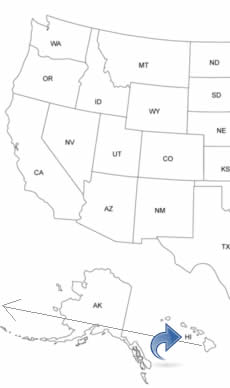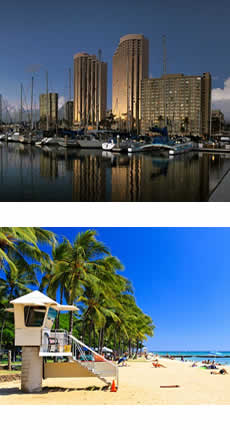HAWAII PEOPLE SEARCH!
- ✔ Contact Info
- ✔ Phone Numbers
- ✔ Criminal Records
- ✔ Income Info
- ✔ Neighbors
- ✔ People's Age
- ✔ Property Ownership
- ✔ And Much More
Honolulu, Hawaii
Honolulu is located on the island of Oahu of Hawaii and is the capital and the largest city in the U.S. State of Hawaii. Honolulu means sheltered harbor. Honolulu incorporates many neighborhoods and districts. Downtown is the historic heart of Honolulu. The surfers and the white sand beaches you will find in Waikiki.
In Manoa-Makiki you will find the National Memorial Cemetery, the University, and the tropical scenery of the Koolau Mountains. Eastern Honolulu is a major residential area and the home to rocky shorelines, scenic beaches, and the popular snorkeling spot Hanauma Bay. Another major residential area, home to the airport, the Bishop Museum, and the military memorials of Pearl Harbor is Western Honolulu.
To See And To Do In Honolulu
- Pearl Harbor
- Mission Houses Museum
- Bishop Museum
- The Nu'uanu Pali Lookout
- Waikiki Beach
- Downtown Honolulu
History Of Honolulu - Timeline
There was a settlement where Honolulu now stands in the 11th century. In 1794, Captain William Brown of Great Britain was the first foreigner to sail into what is now Honolulu Harbor. By 1825, about 6,000 Hawaiians lived in Honolulu.
In 1845, the capital was moved from Lahaina on Maui to Honolulu. In 1874, the Aliiolani Hale building was completed. In 1889, the railroad was built, and in 1891, the Hawaiian Electric Company began servicing island residents. The Hawaiian monarchy ended in 1893. In 1898, the Hawaiian Islands were annexed to the United States.
In 1900, plague infected 11 people. The response by the Board of Health included burning infected buildings. Over 40 fires were set, but winds picked up and the fire spread to other buildings. The runaway fire burned for seventeen days and scorched 38 acres of Honolulu. In 1925, the Aloha Tower was built. In 1927 the HNL Airport as John Rodgers Airport.
On December 7, 1941, over 350 Japanese bomber planes attacked Pearl Harbor. Deaths of military personnel totaled 2,323 people. Many civilians were also killed in the attack. Another 1,178 people were wounded. Eight battleships were sunk or damaged, along with three light cruisers, three destroyers, and four smaller ships. 21 United States ships were damaged and 347 planes. 1,177 men perished in the fiery sinking of the U.S.S. Arizona, which was at its moorings on Battleship Row, and sunk in just nine minutes after being hit by a bomb. Nine hundred of the Arizona's crew remain entombed in the sunken vessel. United States anti-aircraft guns responded to the warplanes 15 minutes after the start of the bombing. Only 29 Japanese planes were destroyed.
In 1952, Hawaii's first television station, KGMB, started. In 1961, Former U.S. president, Barack Obama, was born in Honolulu. In 1969, the State Capitol was built. In 1975, the Aloha Stadium opens. In 2010, the Honolulu Star-Advertiser begins publications.

